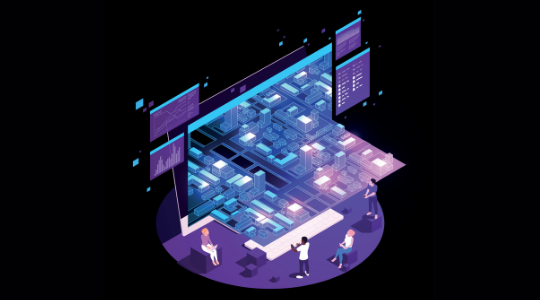Cost Savings – The Untapped Benefit of IoT and Digital Twins
The ongoing global disruption has triggered the need to optimize operations, enhance efficiency, and reduce costs. Although several organizations are turning to IoT and Digital Twins to achieve the former two objectives, only a few companies look at these technologies as a driver for cost savings.
Read on to uncover how these innovative technologies can not only help in tailoring business responses to changing circumstances but also in reducing operational costs.
Improving situational awareness and making better decisions
Application leaders worldwide are increasingly using IoT and Digital Twins to improve situational awareness and respond to evolving changes and disruptions with agility. By creating virtual replicas of physical components, Digital Twins, along with IoT technology, help bridge the gap between physical and digital worlds – enabling organizations to monitor and test physical objects and systems in real-time – especially those that are remotely located or part of a hazardous environment.
For example, in the industrial setting, Digital Twins are being used for predictive maintenance, helping reduce downtime and increasing the lifespan of expensive assets. At the same time, in the healthcare sector, Digital Twins help in real-time patient monitoring, allowing doctors to take timely action based on current vital stats and safeguard the health and well-being of patients. By improving situational awareness and automating business responses, these technologies are helping organizations take timely and proactive action.
Reducing costs
In addition to improving situational awareness and enabling better business decisions, IoT and Digital Twins also help in reducing costs through timely action. By analyzing data in real-time, these technologies help in the timely fixing of small issues – before they develop into large-scale disruptions and result in costly system breakdowns. At the same time, they help prevent production downtime, allowing organizations to keep meeting their system uptime and avoid risking customer satisfaction as well as in revenue. Furthermore, the simulations created by Digital twins also help improving productivity without adding resources, thus paving the way for higher profitability.
Let’s look at how IoT and Digital Twins drive cost reduction across different sectors:
Enable real-time monitoring:
From monitoring patients in real-time to ensuring the safety of the workforce working in dangerous conditions, IoT and Digital Twins play a great role in ensuring assets, people, and processes are monitored and safeguarded against mishaps, threats, and attacks. Such monitoring aids in the quick identification of problems while equipping organizations with the insight they need to avoid life-threatening situations.
For instance, in the manufacturing industry, IoT and Digital Twins can help in recognizing equipment issues before they stall production, allowing early repairs, at lower cost, and avoiding impacts to operations.
Carry out operational analysis
For companies that need to constantly analyze the efficiency and effectiveness of their operations, IoT and Digital Twins pave the way for much-needed operational modeling and analysis. Such automated analysis minimizes the time required from qualified and skilled FTEs, reduces downtime as well as extends the life for high-value assets.
For instance, in the oil and gas sector, these technologies aid in predictive maintenance, thus minimizing the impact of unplanned downtime and the corresponding costs of late or lost production.
Ensure timely risk assessment
Digital Twin-based analytics also paves the way for timely risk assessment and management. With the help of a Digital Twin, enterprises can create a digital replica of real-world processes, identify risks or challenges in the virtual world, and plan for solutions – before the risk actually happens..
For instance, in the healthcare setting, doctors can synthesize unexpected scenarios, examine patients’ responses to these scenarios, and plan care outcomes accordingly. Such assessment can improve healthcare efficiency and can also minimize the costs and impact of ineffective treatment.
Anticipate disruptions
IoT and Digital Twins deliver predictive capabilities to anticipate disruptions and respond to changing business circumstances. By developing business responses according to the context, these technologies help in proactively scheduling repairs, applying security patches, or training the workforce – thus minimizing the impact of disruptions on the functionality, availability, and performance of systems and processes.
In global supply chains, for instance, these technologies can aid in timely tracking and monitoring of high-value, perishable goods - minimizing loss and curtailing damage. At the same time, they can also help in monitoring environmental factors that impact supply chain efficiency, identify supply chain deviations, as well as to detect thefts, shrinkage, or tampering in time.
Detect failures
Companies that use IoT and Digital Twins can detect mechanical failures in real-time and act before the failures cause downtime or sluggish production. By allowing issues to be detected and repairs to be done in time, these technologies help in reducing the cost of outages, missed deadlines, and customer dissatisfaction.
In the transportation industry, IoT and Digital Twin technologies can be used to anticipate high-impact disruptions and enable organizations to take timely action – thus preventing a calamity from happening.
As businesses continue to adapt to the new normal and revamp their business models to survive and thrive, turning to technologies like IoT and Digital Twins is increasing their chances of survival. These technologies are not only helping organizations in enhancing operational efficiencies, but also allowing them to be more responsive to market uncertainties, while keeping the costs down.

